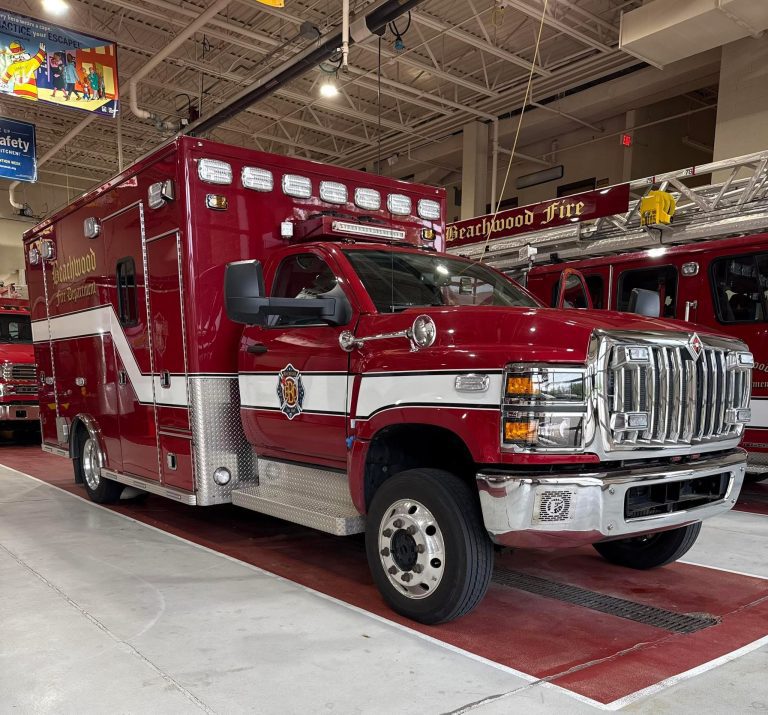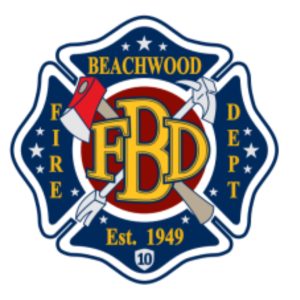Home » Departments » United States » Ohio » Beachwood » Beachwood (OH) Fire Department
Overview
I. Executive Summary
This report evaluates the overall condition of the department across four domains: leadership, culture and morale, operations, and community impact. The findings reveal a department with competent and committed personnel being held back by inconsistent leadership, obsolete administrative habits, and a failure to adapt to the modern realities of fire and EMS work. While individual firefighters maintain pride in their work and a commitment to the public, organizational integrity is being eroded from the top down.
⸻
II. Department Overview
• Type: Municipal Fire Department
• Stations: 2
• Apparatus: 3 ALS Ambulances, 2 Engines, 1 Command Vehicle
• Average Call Volume: 6,500–7,000 calls/year
• Staffing Model: Minimum daily staffing believed to be critically low
• Common Call Types: Overwhelmingly EMS-related, including a disproportionate number of calls from nursing homes and which generally should be handled by private ambulance inter facility transfer-style incidents.
⸻
III. Strengths
• Pay & Benefits: Competitive salary and benefits package (top 5 in the state), including strong benefit package.
• Firefighter Camaraderie: Strong bonds among rank-and-file members help preserve professionalism and accountability where leadership fails.
• Call Volume Experience: High run volume provides valuable field experience for younger paramedics, especially in EMS.
⸻
IV. Leadership Analysis
• Command Integrity: Severely lacking. Leadership, particularly the Fire Chief, demonstrates extreme favoritism, lacks decisiveness, and operates in fear of political backlash rather than with moral courage.
• Decision-Making: Frequently vague, reactive, or designed to set up subordinates for failure. Decisions often prioritize personal or political preservation over operational efficiency.
• Communication: Poor. Most personnel are left uninformed about department direction, policies, or changes until they are retroactively held accountable.
• Mentorship and Development: Nonexistent. Promotions and special assignments are not merit-based, and the leadership does little to develop the next generation of officers.
⸻
V. Culture & Morale
• Work Environment: Toxic top-down. Morale is low due to the double standard in discipline, lack of recognition, and absence of leadership accountability.
• Mental Health: Actively undermined. Derisive comments by command staff about firefighter suicide have destroyed trust in leadership’s care for their people.
• Discipline: Applied inconsistently. Minor issues are punished severely if politically convenient, while major infractions by favored personnel are ignored.
⸻
VI. Operations
• Fireground Performance: When left to the experience and intuition of the crew, performance is competent. However, operational command presence from the top is erratic and often counterproductive.
• Training: Treated as a checkbox. Little emphasis is placed on cohesive team-based drills or modern firefighting/EMS tactics.
• Preparedness: Limited by aging equipment, outdated tactics, and failure to engage in realistic and challenging scenario-based training.
⸻
VII. Community Impact
• Public Perception: The community likely maintains a favorable view of firefighters due to positive direct interaction, but internal dysfunction is invisible to most.
• Outreach and Education: Minimal. The department does not actively engage in meaningful public education, other than occasional community CPR.
• Interagency Cooperation: Hampered by lack of leadership coordination. Mutual aid agreements are necessary but often strained due to internal dysfunction.
⸻
VIII. Recommendations
1. Leadership Overhaul: The current administration must be restructured. Leaders should be selected based on merit, experience, senior, peer, and subordinate evaluation and demonstrated ethical conduct.
2. Minimum Staffing Increase: Raise baseline staffing to match run volume and firefighter safety needs.
3. Mental Health Initiatives: Mandate cultural competency and mental health training for leadership. Bring in third-party peer support teams.
4. Training Reform: Implement structured, progressive training that prioritizes both fireground proficiency and medical excellence, not check in the box training or “red faced training”
5. Promotion & Accountability Policy Rewrite: Establish transparent and fair standards for advancement and disciplinary procedures, and adhere to them.
6. Community Outreach Development: Recruiting and youth engagement programs.
⸻
IX. Final Assessment
This department is held together by the professionalism and grit of its firefighters—not its leadership. The culture at the line level is resilient, but it cannot overcome continued top-down dysfunction indefinitely. If no structural changes occur, the department will face a continued decline in morale, higher turnover, and possible operational failures.
It is a department full of potential, being throttled by incompetence and lack of courage at the highest levels. Reform is not only necessary—it is urgent for the safety of firefighters and the citizens they serve.
Fire Departement
Sorry, no records were found. Please adjust your search criteria and try again.
Sorry, unable to load the Maps API.





Rating Breakdown
1/5
1.5/5
3.5/5
2/5
2 Reviews on “Beachwood (OH) Fire Department”
High pay, good benefits, poor leadership, high call volume, understaffed, 10+ nursing homes.
The department has had a poor reputation due to poor leadership currently and in the past. This is an EMS department that occasionally gets to go to a fire. The sad thing is, it could be a fantastic place to work because of the high pay and generous benefits package but run volume –mostly to nursing homes– is rapidly outpacing compensation, bad leadership that rather waste their authority on insignificant uniform issues, officers’ pet peeves, and new ways to enforce bad policies instead of operational gaps and oversites. The department maintains 11 man minimums and is preparing to hire one additional FF/Medic when they should be hiring about 18. The frontline firefighters are mostly treated as problems for the administration to solve instead of competent professionals to be appropriately trained and led. Training mostly consists of checks in the box instead of valuable and challenging learning opportunities. This department is in dire need of competent, empathetic, emotionally intelligent, strong leadership.
Department Review: A House Divided – Striving for Progress Amidst Leadership Challenges
Intro:
The Beachwood Fire Department stands at a crossroads. We are a department with dedicated firefighters, and a steadily rising call volume that underscores our vital role in the community. However, behind the scenes, internal challenges are taking a toll on morale, growth, and operational cohesion.
At the heart of our department’s struggle lies a significant leadership gap. The fire chief, who should be the guiding force during this period of high demand and transition, has not inspired the confidence or vision necessary to unite all of us. Compounding the issue is a noticeable lack of accountability among the three captains, creating an inconsistent command structure that affects communication, training, and day-to-day operations. This leadership vacuum leaves rank-and-file members feeling unsupported and often frustrated, especially as we shoulder the increasing burdens of emergency response without the backing or clear direction from above.
Despite these challenges, many firefighters are showing commendable resilience and dedication to improving the department’s culture and performance. In the absence of strong top-down leadership, it’s the frontline personnel who have become the backbone of morale. These members are actively engaging in peer support, proposing updated training programs, and seeking ways to modernize the department’s public image and internal culture.
One particularly noticeable area of friction is the department’s slow adaptation to modern professional standards: specifically, regarding tattoos, uniforms, and personal presentation. While numerous departments nationwide (Police and Fire) as well as private sector jobs have updated policies to reflect evolving norms and improve recruitment and retention, Beachwood continues to adhere to outdated practices. This “old-school” mentality, often defended by leadership as tradition, is increasingly seen as a barrier to progress by newer members of the force. Unfortunately, efforts to have open, inclusive conversations about these standards have often met resistance or been dismissed altogether.
Training, a cornerstone of any successful fire department, has become another battleground. Passionate members of the training committee have been working tirelessly to update tactics, incorporate new technologies, and introduce more relevant, scenario-based learning. These initiatives are driven from the bottom up, reflecting a genuine desire to improve service delivery and firefighter safety. Yet, without buy-in from leadership, these efforts face constant obstacles: minimal administrative support, and inconsistent enforcement of standards. Trainings also face obstacles due to the increase in call volume. This increase forces members who train on shift to do trainings not as intended or are not completed at all.
When department leadership repeatedly falls back on the phrase “it’s better than it used to be,” it signals a troubling complacency that frustrates many frontline members. While some progress may have been made, using the past as a benchmark for current standards ignores the urgent need for continued growth and accountability. For the firefighters actively pushing for meaningful change, that response feels dismissive or a way to avoid addressing persistent issues and a clear indicator that leadership is more focused on maintaining the status quo than building a department that meets modern expectations.
The result is a department caught between two realities: one where the rank and file are striving to innovate and lead from the ground up, and another, where leadership’s inaction stifles momentum and morale. The contrast is stark and increasingly unsustainable.
What is clear, however, is that the spirit of the personnel on the ground remains strong. Their efforts to maintain morale, modernize culture, and push for operational excellence despite the headwinds are commendable. The community may not always see the internal struggles, but it certainly benefits from the unwavering dedication of those who continue to show up and give their best every day.
The path forward must involve honest self-reflection from leaders in key roles. Specifically, a willingness to embrace change and genuine engagement with those doing the work. Until that shift happens, progress will continue but at the cost of burnout, attrition and a widening divide between potential and performance.
Summary:
I wish I could give the department a better review. Members are currently trying to recruit motivated individuals and want change. Beachwood Fire is found in a city with great resources and a strong community infrastructure; this department has all the external tools it needs to thrive. The challenge lies within. Fortunately, many of the members; particularly those on the front lines are not giving up. Their commitment to positive change, modern thinking, and elevating the department’s image and effectiveness is evident, even in the face of resistance. With the right leadership and accountability, this department has the potential to rise above its current challenges and truly excel.